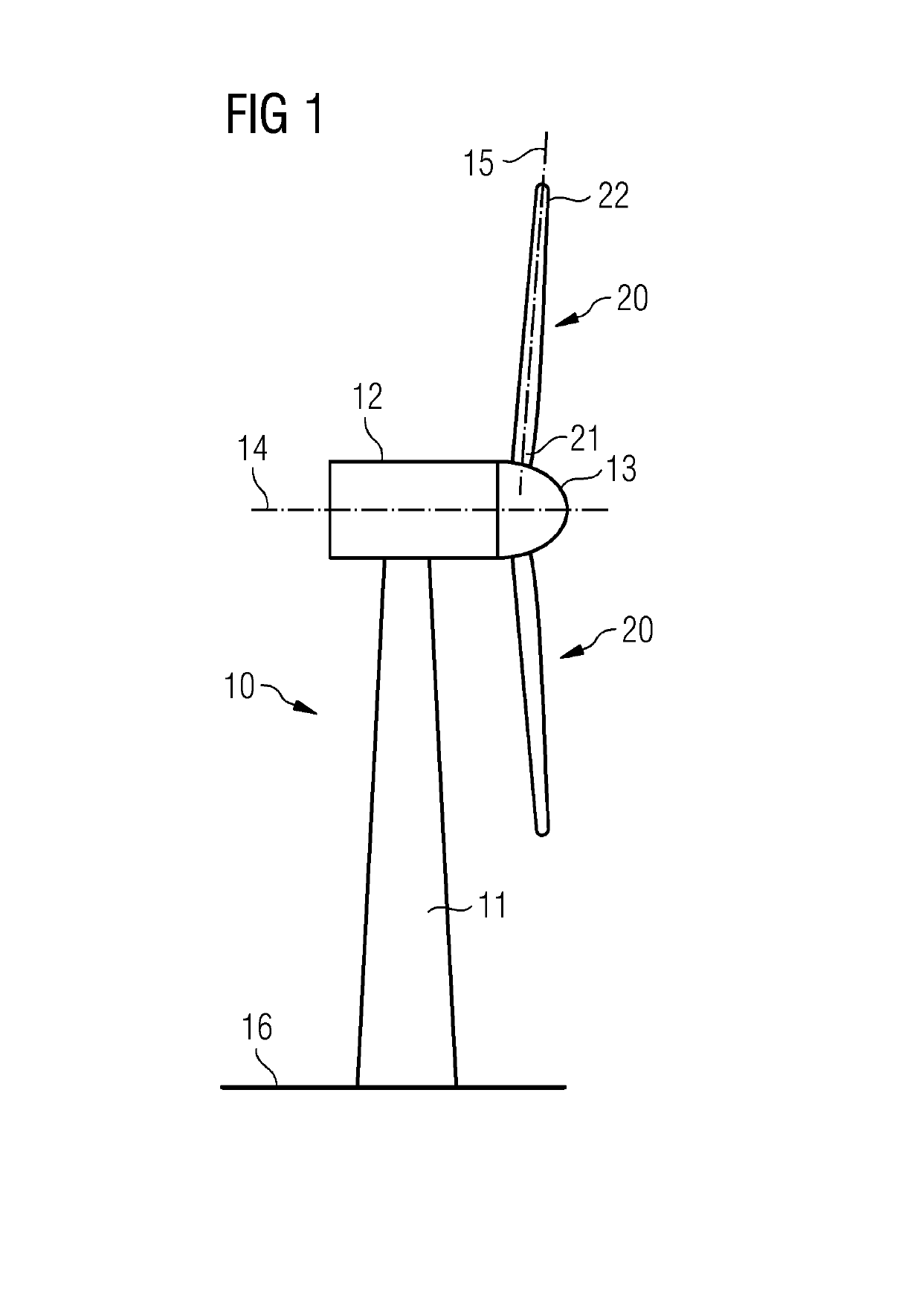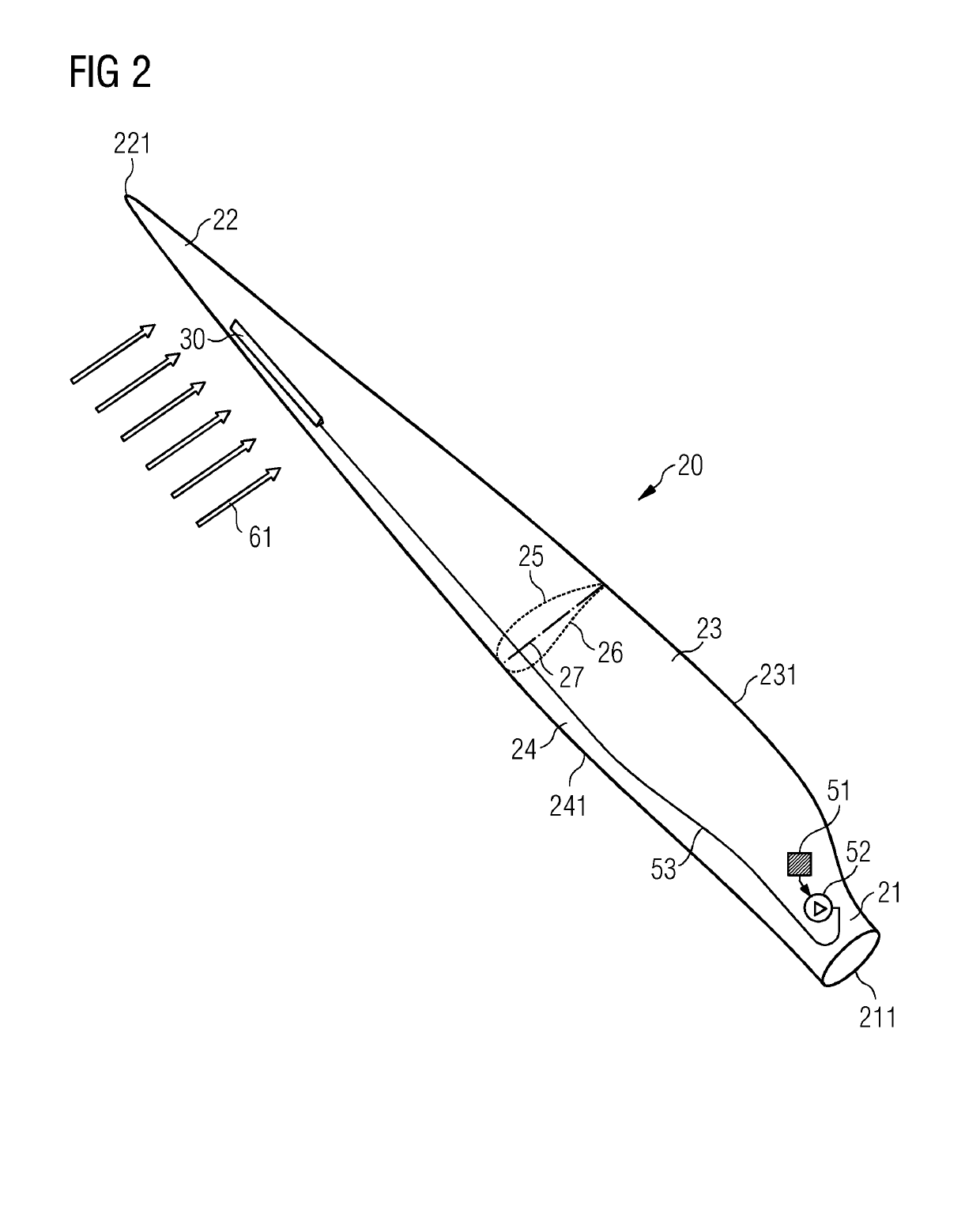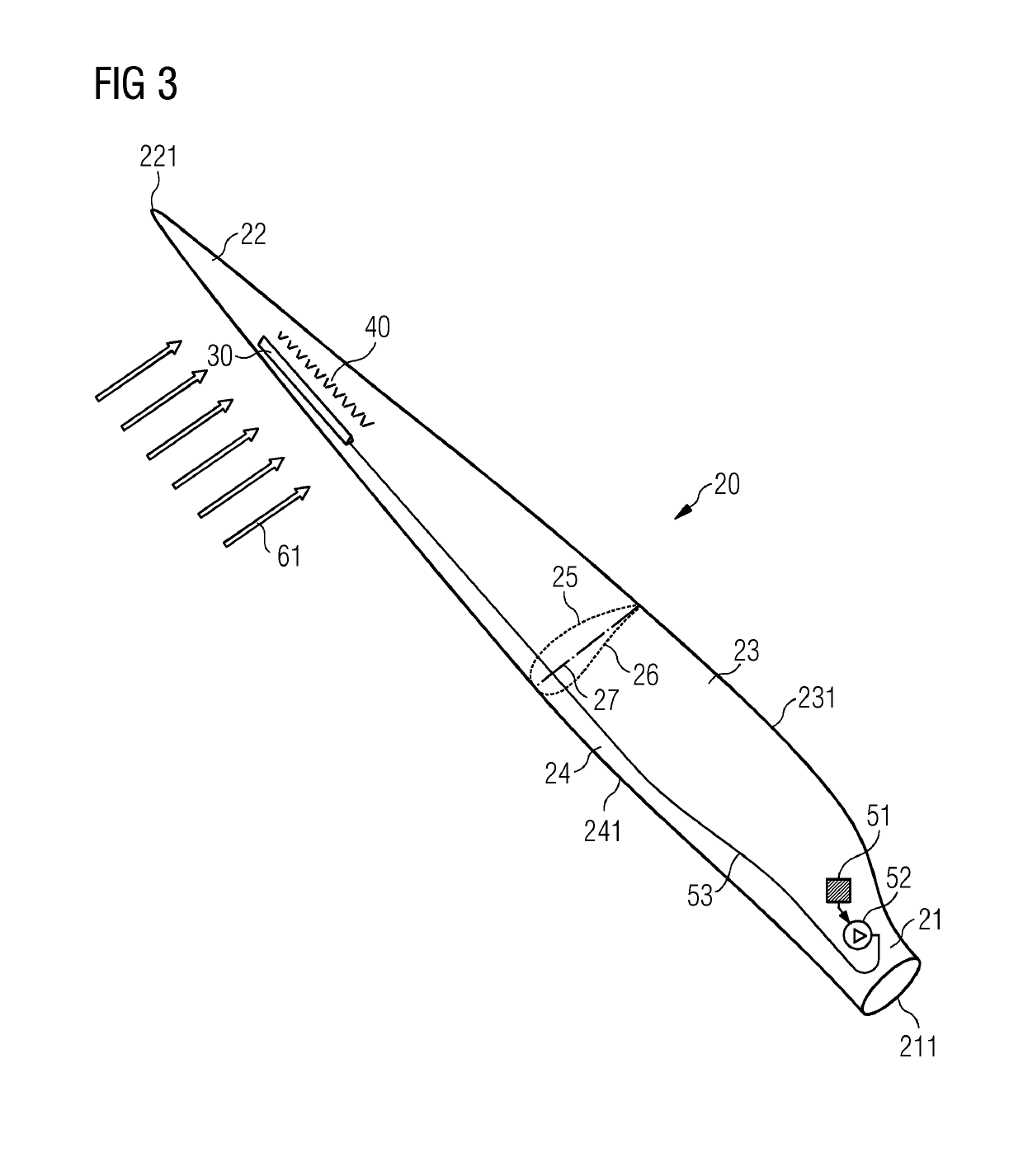Flow control arrangement for a wind turbine rotor blade
a technology of flow control and wind turbine, which is applied in the field of rotor blades, can solve the problems of pneumatic actuator collapse and move, stall of airflow, and high lift and achieve the effect of improving the aerodynamic properties of the rotor blad
- Summary
- Abstract
- Description
- Claims
- Application Information
AI Technical Summary
Benefits of technology
Problems solved by technology
Method used
Image
Examples
first embodiment
[0083]FIGS. 4 and 5 illustrate a fail-safe aerodynamic device 30 according to embodiments of the invention.
[0084]FIG. 4 shows the situation that the aerodynamic device 30 is in its first configuration. This means that in the situation as illustrated in FIG. 4, no pressure is applied to the pressure hose 31 of the aerodynamic device 30. As a consequence, the fluid 62 inside the hose 31 is at a predetermined pressure which may e.g. approach or be equal to the atmospheric pressure.
[0085]The aerodynamic device 30 comprises a first portion 34. The first portion 34 is relatively stiff and rigid. It is at least rigid enough to resist and deviate the airflow 61 which is flowing from the leading-edge section to the trailing edge section of the rotor blade. In the first configuration of the aerodynamic device 30, the first portion 34 of the aerodynamic device 30 protrudes. In other words, the first portion 34 projects away from the surface 28 of the rotor blade.
[0086]The aerodynamic device 30...
second embodiment
[0098]Finally note that care must be taken during design of the second embodiment, in particular with regard of the hinge mechanism which induces aligning the first portion with the surface 28 of the rotor blade. At the same time, it needs to be ensured that the aerodynamic device 30 in its second configuration is flat enough to not spoil the airflow, although its pneumatic actuator is inflated.
[0099]FIGS. 8 and 9 show a third embodiment of an aerodynamic device 30. Again, for sake of conciseness, similar or identical elements, which have already been introduced for the first or second embodiment of the aerodynamic device 30 will not be repeated here.
[0100]FIG. 8 shows the aerodynamic device 30 in its first configuration, i.e. in its “neutral” position without application of any pressure by the pressure supply system. The airflow 61 is spoiled, stall is induced, and, consequently, lift and load is reduced.
[0101]In contrast to FIG. 8, FIG. 9 shows the aerodynamic device 30 in its sec...
third embodiment
[0102]The similarity between the second and the third embodiment consists in that for both embodiments, a positive pressure needs to be applied to the pneumatic actuator of the aerodynamic device 30 to change the aerodynamic device 30 from its first into its second configuration.
[0103]The modification of the third embodiment with regard to the second embodiment is that in the third embodiment the aerodynamic device 30 is predominantly embedded into the shell 29 of the rotor blade. This has the advantage that drag of the aerodynamic device 30 is minimized. This is especially advantageous in the second configuration of aerodynamic device 30, when an increase as high as possible of the lift of the rotor blade is generally desired. The third embodiment of the aerodynamic device 30 proposes an attractive solution to this desire, as the aerodynamic device 30 is almost flush with the surface 28 of the rotor blade in its second configuration.
[0104]FIGS. 10 and 11 show a variant of the secon...
PUM
 Login to View More
Login to View More Abstract
Description
Claims
Application Information
 Login to View More
Login to View More - R&D
- Intellectual Property
- Life Sciences
- Materials
- Tech Scout
- Unparalleled Data Quality
- Higher Quality Content
- 60% Fewer Hallucinations
Browse by: Latest US Patents, China's latest patents, Technical Efficacy Thesaurus, Application Domain, Technology Topic, Popular Technical Reports.
© 2025 PatSnap. All rights reserved.Legal|Privacy policy|Modern Slavery Act Transparency Statement|Sitemap|About US| Contact US: help@patsnap.com



